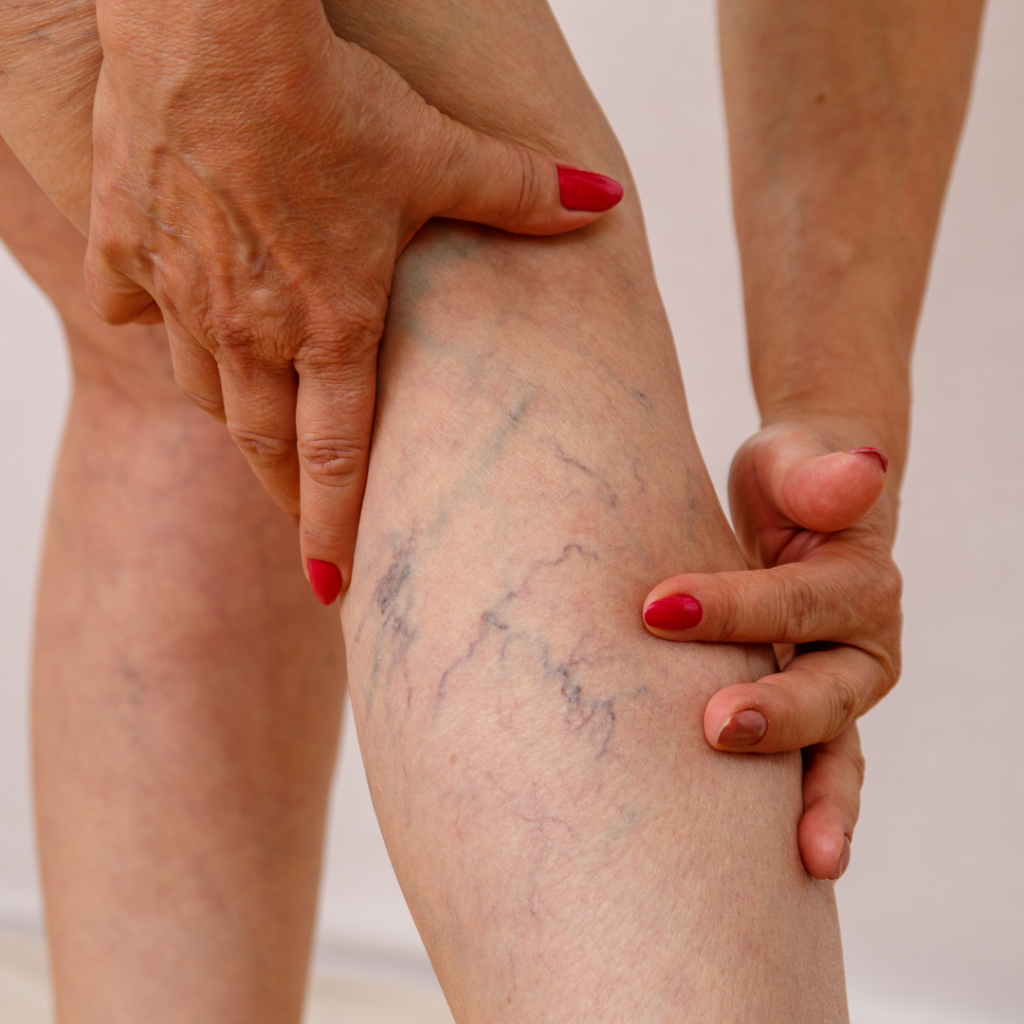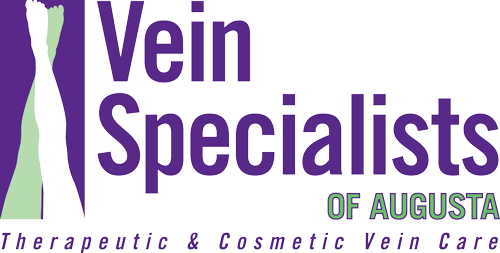Healthy veins carry blood from the extremities and organs back to the heart. Muscle contractions pump the blood toward the heart, and one-way vein valves prevent blood from flowing backward. If vein valves malfunction, the affected veins may become spider veins (telangiectasias). While these veins are not typically as serious as varicose veins, they may still cause pain and should be treated to restore better blood flow.
Spider Veins
Causes of Spider Veins
Malfunctioning vein valves may allow blood to flow backward away from the heart. Like a broken pipe, this can cause the fluid to pool and leads it to become what we call a spider vein.
These veins are usually caused by the same factors that cause varicose veins, including:
- Pregnancy
- Other hormonal changes (such as menopause)
- Family history of vein problems
- Trauma
- Obesity
- Frequent sitting or standing in place for extended periods of time
Symptoms of Spider Veins
Malfunctioning veins known as spider veins are easily recognizable and relatively common. These tiny bluish, reddish, or purplish-colored veins look like spider legs, webs, or miniature tree branches. These veins can occur in isolated cases, or an individual may have many in one area. Common symptoms include leg pain, discomfort, a feeling of heaviness, itching, and burning. Some people may have many of them and yet experience no symptoms at all.
Causes of Spider Veins

Treatment for Spider Veins
Spider veins will not repair themselves. However, even if they do not cause any pain or other symptoms, it is important to consider getting examinations and treatments because these veins may indicate as-yet undetected problems with larger veins. Here at Vein Specialists of Augusta, we use ultrasound examination and thorough measures to diagnose.
Sometimes when larger vein problems are discovered and subsequently treated, smaller ones will go away on their own. However, most often when larger veins are treated, it simply makes the treatment of smaller veins more successful.
SCLEROTHERAPY
Spider veins are usually treated with sclerotherapy. For this treatment, a chemical irritant called a sclerosant is injected into the vein. This disables the vein walls and causes the spider vein to fade away over time. The body reroutes the blood flow through adjacent healthy veins so that venous circulation can return to normal. Depending on the patient’s needs, one of several sclerosants may be used. The procedure is short and does not require any general anesthesia. Pain is minimal. It may take 2 to 4 treatments to fully treat spider veins.
A new technique called foam sclerotherapy involves mixing the fluid into a foam before injection so that more of the sclerosant comes into contact with the vein wall. The foam technique is thought to improve the success rate of the sclerosant at lower concentrations. At Vein Specialists of Augusta, we also use a vein light to assist in the treatment of spider veins. The vein light helps us identify and treat a larger area of spider veins with just one or two injections. We also use a technology called ultrasound-guided sclerotherapy, in which ultrasound technology helps us locate and treat spider veins that cannot be seen on the surface of the skin.
We use the following sclerosants at Vein Specialists of Augusta:
- Polidocanol (aethoxysclerol) – a painless detergent sclerosant with minimal to no risk of reactions or side effects
- STS (sodium tetradecyl sulfate)
- Glycerin
Regardless of the type of sclerosant used, sclerotherapy complications are infrequent and minor.
EXCEL V+ LASER
The Excel V+ laser is very effective for eliminating spider veins. No needle sticks are required.
Recovery and Results
After your injection, the treated area is covered with cotton balls held in place by medical tape. This bandage will be removed the day after the procedure. Compression stockings should be worn for at least 3 days to help the body heal and adapt. As the sclerosant affects the vein, the spider vein will gradually disappear, and the skin of the treated area will take on a more natural and even tone. Symptoms will also go away as healthy circulation is restored.
While the treated veins will not come back, others can develop over time. Spider veins can also be indicators of varicose veins and more serious vein conditions. For this reason, it is important to treat the condition causing them and minimize your risk of future vein problems. For many individuals, additional sclerotherapy treatments for new spider veins may need to be administered every few years. Careful monitoring of vein health can help to promote long term healthy circulation.
Our highly experienced staff at Vein Specialists of Augusta can help you determine if treatment can help your specific situation.
We accept insurance, Medicare, and Care Credit Financing.
Call 706-535-7551 to speak to us or to request your appointment.
